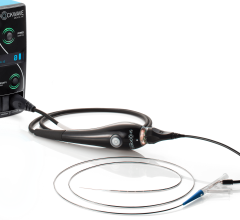
January 2, 2017 — The U.S. Food and Drug Administration (FDA) hopes to build clinical evidence through new registries for the utility of endovascular therapies to treat acute ischemic stroke. It plans to host a public workshop entitled “Coordinated Registry Network (CRN) for Devices Used for Acute Ischemic Stroke Intervention (DAISI).”
The workshop will be held Feb. 2, 2017, 8 a.m. to 5 p.m. at the Ruth L. Kirschstein Auditorium, Natcher Conference Center, Bldg. 45, National Institutes of Health Campus, 9000 Rockville Pike, Bethesda, Md. 20892.
Stroke is the fifth leading cause of death in the United States and the number one preventable cause of disability.[1] Recent publication of five prospective randomized trials and revised practice guidelines in the treatment of stroke has suggested the potential therapeutic role of endovascular therapy in combination with pharmacotherapy (typically intravenous tissue plasminogen activator (IV t-PA)) for patients with proximal large vessel occlusion stroke in the anterior circulation (M1 Middle Cerebral Artery segment with or without concomitant internal carotid artery occlusion)[2-6]. FDA believes that research and development in this field, including the collection of data through the use of registries, provides a potential data source for expanding indications for already cleared/approved devices.
Development and leveraging support for data collected within appropriate registries; with the participation of professional medical societies, industry, patient groups, healthcare facilities, and payers; can further drive innovation in this area and aid in the improvement of clinical care and patient outcomes. A coordinated registry network may also collect data reflective of clinical practice that is of sufficient quality and breadth to support scientific, clinical, and regulatory decision-making and aid in the design of future studies and performance testing requirements for new or existing devices.
This workshop is aimed at addressing scientific, clinical and regulatory considerations associated with medical devices used in the treatment of acute ischemic stroke medical devices. The meeting also is to discuss the development of coordinated registry networks to serve the following topic areas:
• Clinical common data elements;
• Standardized definitions and case report forms;
• Informatics, sustainability and data quality; and
• Additional scientific, methodological and clinical considerations for evaluating information obtained from registries.
The public can submit comments electronically using the Federal eRulemaking Portal: at www.regulations.gov.
References:
1. American Stroke Association, ``Impact of Stroke (Stroke statistics)'' (http://www.strokeassociation.org/STROKEORG/AboutStroke/Impact-of-Stroke-Stroke-Statistics_UCM_310728_Article.jsp#.VvFGChvruUk).
2. Berkhemer, O. A., et al. ``A Randomized Trial of Intraarterial Treatment for Acute Ischemic Stroke.'' New England Journal of Medicine. 372, 11-20 (2015).
3. Saver, J. L., et al. ``Stent-Retriever Thrombectomy After Intravenous t-PA Versus t-PA Alone in Stroke.'' New England Journal of Medicine. 372, 2285-2295 (2015).
4. Goyal, M., et al. ``Randomized Assessment of Rapid Endovascular Treatment of Ischemic Stroke.'' New England Journal of Medicine. 372, 1019-1030 (2015).
5. Campbell, B. C., et al. ``Endovascular Therapy for Ischemic Stroke with Perfusion-Imaging Selection.'' New England Journal of Medicine. 372, 1009-1018 (2015).
6. Jovin, T. G., et al. ``Thrombectomy Within 8 Hours After Symptom Onset in Ischemic Stroke.'' New England Journal of Medicine. 372, 2296-2306 (2015).


 March 17, 2025
March 17, 2025 








